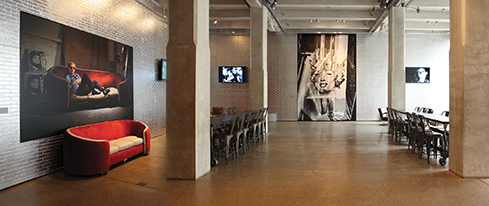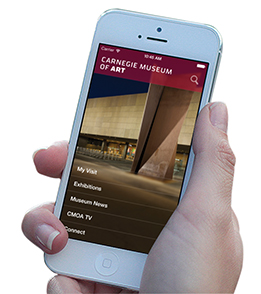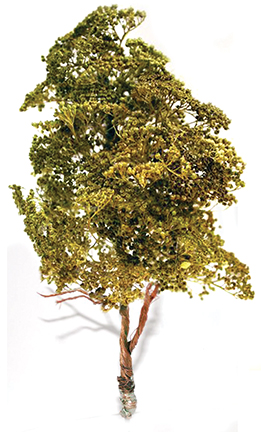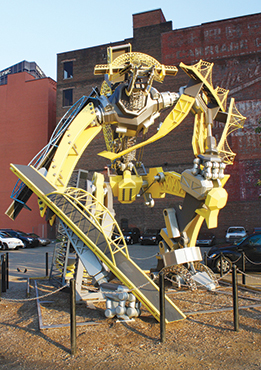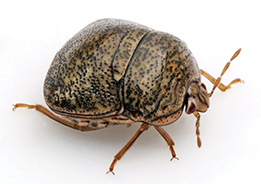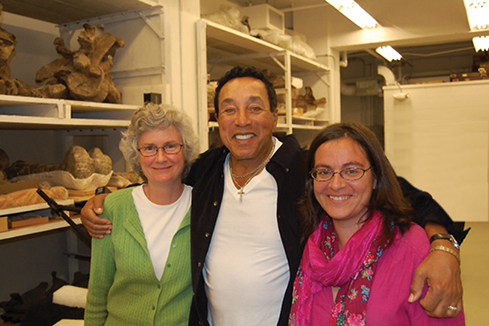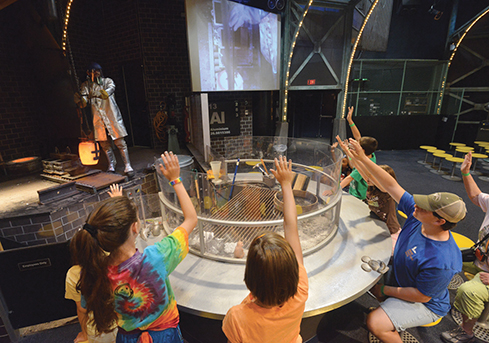 Winter 2013
Winter 2013
Come hang
Like any good superstar, The Andy Warhol Museum is primping in advance of its big birthday next spring. But the museum’s first floor renovation, inspired by Warhol’s Silver Factory, was no simple nip and tuck. It’s the first phase of a major overhaul in the way the keeper of The Warhol flame welcomes its visitors. The makeover was inspired by Warhol’s midtown Manhattan studio of the 1960s, known as much as a celebrity hangout as the place where Warhol famously churned out silkscreens. Rows of nearly floor-to-ceiling windows now lure visitors inside. Shabby chic furniture coupled with an iPad bar and rotating Warhol films encourage them to sit and stay awhile. And The Warhol Store expanded to nearly triple the size of its former space. The project was made possible with support from the Eden Hall Foundation, The Heinz Endowments, and an anonymous donor. Coming just in time for the museum’s 20th anniversary in May: a complete rehang of the museum’s works in chronological order. Stay tuned!
Pocket guide to the International
Want some help navigating the Carnegie International? Hop on a daily docent-led tour or download a free Museum of Art app that helps the curious wind their way through the artwork by artist, medium, location, or themes suggested by the curators. You’ll hear exclusive interviews with artists and curators, too. Andrew Russeth of the New York Observer says while most art apps underwhelm him, this one “has a boatload of content.” It’s available at www.cmoa.org/app and in the iTunes store for the iPod Touch, iPhone, and iPad. And if you don’t have one of these devices, borrow one, free of charge, during your next visit.
250,000 trees
Among its many claims to fame, Carnegie Science Center’s Miniature Railroad & Village® boasts 250,000 model trees, each handmade by twisting a copper wire to shape its trunk and limbs and then topped with multi-colored pieces of wild dried hydrangea flowers. No two are alike!
He's back
More than a year after he disappeared from the corner of Seventh Street and Fort Duquesne Boulevard in Pittsburgh’s Cultural District, Arch, the Transformer-like sculpture created by Los Angeles-based artist Glenn Kaino, has joined Carnegie Museum of Natural History’s T. rex and Andy Warhol’s cow wallpaper to greet the masses at the Greater Pittsburgh International Airport. Arch was commissioned in 2008 as part of The Heinz Endowments’ arts initiative celebrating Pittsburgh’s 250th birthday. The 20-foot steel-and-fiberglass sculpture includes design elements that resemble the girders and brackets of Pittsburgh’s bridges—a perfect symbol for a city that boasts 446 of them.
Meet the new enemy
The olive-green and brown speckled pests get their name from what they eat: the fast-growing kudzu vine, commonly called “the vine that ate the south” because of its fast, predatory growth. Kudzu bugs originated from East Asia, first surfaced in the United States in Georgia in 2009, and to date have made their way as far north as Maryland. But contrary to what’s been widely reported, Rawlins says the bugs can’t bite; however, when crushed they leave behind a nasty stain, a foul odor, and may even cause an allergic reaction that leads to skin irritation. “They’re likely going to be worse as far as getting into homes through cracks and crannies,” says Rawlins. The best prevention: seal your home properly.
"In all of my years traveling around the world, I didn't know what Pittsburgh had to offer. It's fantastic." – R&B legend Smokey Robinson this September, after a private tour of Carnegie Museum of Natural History's collections given by museum scientists. He visited along with museum board member Bob Buzzelli of BNY Mellon.
Soup's on
Carnegie Science Center’s aluminum foundry—the country’s only working metal foundry inside a science museum—is fired up for the return of Aluminum Soup, a Works Theater show chock-full of red-hot science, including a demonstration of how “frozen” aluminum, fresh out of its mold, is still hot enough to turn water into steam. With the help of overhead mirrors and cameras, visitors can watch each step of the process and even feel the heat of the molten aluminum —fired to more than 1,000 degrees—as it’s pulled out of the furnace. Previously reserved only for special events, the foundry gives history buffs the opportunity to learn how aluminum was first used and how Pittsburgh played a big role in its mass production.
|
What's Your Energy IQ? · A Playful, Soulful Spectacle · Energy in Human Form · For the Love of Bugs · Directors' Note · Face Time: Donald Warhola · Artistic License: Girl Power · Field Trip: Pop goes China · About Town: Art for All · The Big Picture
 |
Copyright © 2017 CARNEGIE Magazine. All rights reserved. |

